Atlantic Monthly Contributors's Blog, page 419
June 8, 2015
Fun Home's Success Defines the 2015 Tony Awards
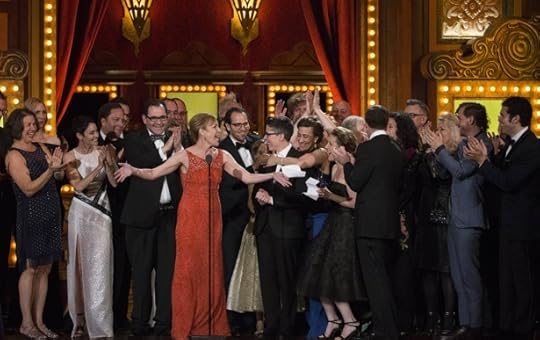
Fun Home, the musical adaptation of Alison Bechdel's graphic-novel memoir, won the night at Sunday’s Tony Awards, a triumph that capped a groundbreaking ceremony where women collected trophies in every creative field. Fun Home's composer Jeanine Tesori and lyricist/book writer Lisa Kron made history as the first female writing team to win in their categories, and despite rave reviews, Fun Home's wins were a genuine surprise, upending industry predictions that had tapped a stage version of the 1951 film An American in Paris as the favorite because of its potential as a national touring production.
Related Story
The Play That Took Me Inside My Autistic Son's Head
Along with Fun Home’s success, the ceremony, broadcast on CBS live from Radio City Music Hall, saw women accept trophies for Direction of a Play (Marianne Elliott for The Curious Incident of the Dog in the Night-Time), Scenic Design of a Play (Bunny Christie for the same production, along with Finn Ross), Costume Design of a Musical (Catherine Zuber for the revival of The King and I) and more. It felt like an inadvertent rebuke to the homogenous slate of nominees offered by the Academy Awards this year, and an advertisement for the creative diversity that seems to be on an upswing this year on Broadway. Only nine women have won a Tony for directing—but that’s eight more than have won an Oscar in the same category, and 33 percent of this year’s Tony-eligible shows were directed by women this year, compared to 13 percent the year before.
Still, CBS’s presentation of the slate of winners left much to be desired—the Oscars may be predictable, but there’s a reason why they remain the gold standard in entertainment industry award ceremonies. An “in memoriam” segment commemorating actors who had died in the past year was presented as a Josh Groban concert (the artist sang “You'll Never Walk Alone” as a list of names rapidly scrolled by behind him). Tesori and Kron’s win occurred during a commercial break, and was briefly recapped as a ten-second snippet. And Fun Home's producer Kristin Caskey was played off the stage by the orchestra during her speech before a predictable closing performance from the cast of Jersey Boys.
The Tonys have never quite been able to shake their chintzy feeling—the actors Kristen Chenoweth and Alan Cumming made for competent hosts, but their jokes largely relied on costume-change sight gags. Several new musicals that weren’t even eligible for awards this year were given space to perform songs, which felt like an advertisement for both the shows and next year's ceremony. The time would have been better spent on this year’s winners, particularly on more clips highlighting the year's nominated plays, which were mostly brushed over so as to give more room to the musical numbers.
 Sydney Lucas sings “Ring of Keys” from Fun Home (Lucas Jackson / Reuters)
Sydney Lucas sings “Ring of Keys” from Fun Home (Lucas Jackson / Reuters) Still, the power of a hit song played to a room of theater professionals is hard to ignore, and Fun Home cemented its terrific night with Beth Malone and Sydney Lucas’ show-stopping rendition of “Ring of Keys.” The song details the moment a young Alison Bechdel noticed, and felt instant kinship, with a delivery woman who “wore men’s clothes and had [a man’s] haircut.” The night featured several other notable performances—a medley of The King and I's best-known songs featuring nominated actors Kelli O'Hara and Ken Watanabe, and a fourth-wall breakdown of musical theater itself from the multi-nominee Something Rotten. But Fun Home's performance was moving enough to underline why it swept the major awards (Michael Cerveris, who plays Bechdel's father in the show, also won for Best Actor in a Leading Role).
In true award-show tradition, the most memorable speech came from a theater veteran collecting her first award—O’Hara, who finally won for her performance as schoolteacher Anna in The King and I. Previously nominated five times for her highly praised work in The Light in the Piazza, The Pajama Game, South Pacific, Nice Work if You Can Get It, and The Bridges of Madison County, O’Hara had the breathless excitement of someone who genuinely didn’t expect to win. "You would think that I would have written something down by now, but I haven’t," she said, thanking her parents for grinning through her subsequent losses.
The American Theater Wing, which organizes the Tonys, rewarded creativity and risk taking in 2015.The same could not be said for Helen Mirren, who won for her role as Queen Elizabeth II in Peter Morgan's play The Audience, which charts the monarch's meetings with each of Britain’s prime ministers since 1952. The Audience also won for Best Featured Actor (Richard McCabe as Harold Wilson), but the big winner in the original play category was The Curious Incident of the Dog in the Night-Time, another innovative adaptation of a major literary work. Simon Stevens and Marianne Elliott's staging of Mark Haddon's novel, which is told from the perspective of an autistic teenage boy, wowed critics and proved another surprise hit. While Mirren's victory was assured, Lead Actor in a Play went to Curious Incident's Alex Sharp, the category’s youngest-ever winner and a recent Juilliard graduate, who beat big names including Bradley Cooper in The Elephant Man and Bill Nighy in Skylight.
The American Theater Wing, which organizes the Tony Awards, is often criticized for embracing commercial success, big-name stars, and shows that have the potential to tour nationally rather than better-received works. But the group rewarded creativity and risk taking in 2015—a model other awards shows would do well to follow. Next year, hoping that the Tonys continue this trend, CBS would be better-served if it actually sought to highlight such innovation to its national audience, rather than swiftly ushering it in right after the commercials.









McKinney, Texas, and the Racial History of American Swimming Pools

On Friday, a large group of teens gathered for a pool party in the city of McKinney, Texas. Shortly thereafter, someone called the police. And by Sunday night, as footage of the police response spread across the internet, the McKinney Police Department announced it was placing Eric Casebolt, the patrol supervisor shown in the video, on administrative leave.
It is the latest in a string of incidents of police using apparently excessive force against African Americans that has captured public attention. And it took place at a communal pool—where, for more than a century, conflicts over race and class have often surfaced.
The video shows a foul-mouthed police corporal telling the young men he encounters to get down, and the young women to take off, although far more obscenely. When several seated young men appear to ask, politely, for permission to leave, he explodes at them: “Don’t make me fucking run around here with thirty pounds of goddamn gear in the sun because you want to screw around out here.” The corporal was white. The young people he detained were, almost without exception, black.
The video next shows him repeatedly cursing at a group of young women, telling them to move on. Then he wrestles one to the ground. As bystanders react in horror, and several rush toward the young woman as if to her assistance, he draws his sidearm. They flee. He returns to the teenager, wrestles her back down, forces her face into the ground, and places both knees on her back.
The McKinney police said, in a statement, that they were called to respond to the Craig Ranch North Community Pool for a report of “a disturbance involving multiple juveniles at the location, who do not live in the area or have permission to be there, refusing to leave.” They added that additional calls reported fighting, and that when the crowd refused to comply with the first responding officers, nine additional units were deployed.
The mayor, Brian Loughmiller, described himself as “disturbed and concerned,” and the police chief vowed “a complete, and thorough, investigation.”
Like many flourishing American suburbs, McKinney has struggled with questions of equity and diversity. The city is among the fastest-growing in America, and its residents hail from a wide range of backgrounds. Formal, legal segregation is a thing of the past. Yet stark divides persist.
In 2009, McKinney was forced to settle a lawsuit alleging that it was blocking the development of affordable housing suitable for tenants with Section 8 vouchers in the more affluent western portion of the city. East of Highway 75, according to the lawsuit, McKinney is 49 percent white; to its west, McKinney is 86 percent white. The plaintiffs alleged that the city and its housing authority were “willing to negotiate for and provide low-income housing units in east McKinney, but not west McKinney, which amounts to illegal racial steering.”
All three of the city’s public pools lie to the east of Highway 75. Craig Ranch, where the pool party took place, lies well to its west. BuzzFeed reports that the fight broke out when an adult woman told the teens to go back to “Section 8 housing.”
Craig Ranch North is the oldest residential portion of a 2,200 acre master-planned community. “The neighborhood is made up of single-family homes,” says the developer’s website, “and includes a community center with two pools, a park and a playground.” Private developments like Craig Ranch now routinely include pools, often paid for by dues to homeowners’ associations, and governed by their rules. But that, in itself, represents a remarkable shift.
At their inception, communal swimming pools were public, egalitarian spaces. Most early public pools in America aimed more for hygiene than relaxation, open on alternate days to men and women. In the North, at least, they served bathers without regard for race. But in the 1920s, as public swimming pools proliferated, they became sites of leisure and recreation. Alarmed at the sight of women and men of different races swimming together, public officials moved to impose rigid segregation.
As African Americans fought for desegregation in the 1950s, public pools became frequent battlefields. In Marshall, Texas, for example, in 1957, a young man backed by the NAACP sued to force the integration of a brand-new swimming pool. When the judge made it clear the city would lose, citizens voted 1,758-89 to have the city sell all of its recreational facilities rather than integrate them. The pool was sold to a local Lions’ Club, which was able to operate it as a whites-only private facility.
The decisions of other communities were rarely so transparent, but the trend was unmistakable. Before 1950, Americans went swimming as often as they went to the movies, but they did so in public pools. There were relatively few club pools, and private pools were markers of extraordinary wealth. Over the next half-century, though, the number of private in-ground pools increased from roughly 2,500 to more than four million. The declining cost of pool construction, improved technology, and suburbanization all played important roles. But then, so did desegregation. As historian Jeff Wiltse argues in his 2007 book, Contested Waters: A Social History of Swimming Pools in America:
Although many whites abandoned desegregated public pools, most did not stop swimming. Instead, they built private pools, both club and residential, and swam in them …. Suburbanites organized private club pools rather than fund public pools because club pools enabled them to control the class and racial composition of swimmers, whereas public pools did not.
Today, that complicated legacy persists across the United States. The public pools of mid-century—with their sandy beaches, manicured lawns, and well-tended facilities—are vanishingly rare. Those sorts of amenities are now generally found behind closed gates, funded by club fees or homeowners’ dues, and not by tax dollars. And they are open to those who can afford to live in such subdivisions, but not to their neighbors just down the road.
Whatever took place in McKinney on Friday, it occurred against this backdrop of the privatization of once-public facilities, giving residents the expectation of control over who sunbathes or doggie-paddles alongside them. Even if some of the teens were residents, and others possessed valid guest passes, as some insisted they did, the presence of “multiple juveniles…who do not live in the area” clearly triggered alarm. Several adults at the pool reportedly placed calls to the police. And none of the adult residents shown in the video appeared to manifest concern that the police response had gone too far, nor that its violence was disproportionate to the alleged offense.
To the contrary. Someone placed a sign by the pool on Sunday afternoon. It read, simply: “Thank you McKinney Police for keeping us safe.”









June 7, 2015
Turkish President Erdogan's Triple Defeat

Turkish President Recep Tayyip Erdogan suffered a painful triple defeat in elections on Sunday.
While Erdogan himself was not on the ballot, his Justice and Development Party (or AKP) lost its hold on parliament. The AKP was still clearly the leading party, garnering around 41 percent of the vote in preliminary returns, but it failed to win an outright majority. A second defeat was that one reason for the AKP’s struggles was a surge by the Peoples’ Democratic Party, or HDP. For the first time, the party—a liberal group whose traditional base is Turkey’s Kurdish minority—crossed the magical 10 percent threshold required to actually earn seats in parliament. It did that in part by campaigning against the president. All that combined to produce what might be most galling of all to Erdogan: It means his hopes at changing the constitution to produce an executive presidency more like the U.S. setup are likely dead.
Related Story
Sultan Erdogan: Turkey's Rebranding Into the New, Old Ottoman Empire
The presidential position is currently largely ceremonial, though there’s no doubt that Erdogan holds the reins of power. He was, however, officially barred from campaigning during the election. While Erdogan insisted he had benign intentions in seeking the new setup, some observers warned that it would be a step on the way to dictatorship.
It may be that Erdogan simply overreached in the last few years. While he’s Turkey’s most popular and powerful leader in decades, his eagerness to expand his reach alienated voters, particularly urban and secular ones. He embarked on a $615 million white-elephant palace project, imprisoned and intimidated the press and his political opponents, tried to block YouTube and Twitter, and feuded with Fethullah Gulen, a religious leader who’d help bring him to power. Anger boiled over in the streets of Istanbul and elsewhere in 2013, sparked by protests over trying to turn a park in the city into a mall. Meanwhile, the economy sputtered.
Rounding out the rest of the vote on Sunday, the secular-nationalist Republican People’s Party (CHP) won 25 percent; the right-wing Nationalist Movement Party (MHP) took 17 percent; and the HDP ended up at 12.5 percent. To change the constitution, the AKP would need 367 seats; a majority would have been 276. Instead, it’s projected to take 258.
An AKP official told Reuters, “We expect a minority government and an early election." The party could seek a coalition government instead, but its prospects aren’t great. The CHP, its main rival, and HDP have both ruled out coalitions—not that they were likely in the first place. The MHP seems like a more natural partner, but the AKP isn’t interested, the same official said glumly: "If there is an AKP-MHP coalition, then we will not be able to achieve even this level of votes at the next election.”
The party tried to play up fear of a return to the bad old days of coalition governments, instability, and coups as a way to earn support. The stability of the last decade has been one of Erdogan’s great selling points. But his wily political maneuvering means it’s tough to count him out yet.
Despite fears, the day of the election seemed generally calm. That hadn’t been true of the campaign. On Friday, an explosion at an HDP rally killed two and injured more than 100. The rally was in Diyarbakir, a southeastern, mostly Kurdish city. Authorities haven’t placed blame for the attack.
It’s almost hard to recall that only a few years ago, Erdogan, a moderate Islamist, was viewed by both Western allies and reformers in Arab countries as a model for Muslim democracy. As a NATO ally in the Middle East, he’s been an important part of various security questions. But as he seeks more power, Erdogan has feuded with Western countries, who no longer see him as the reliable and trustworthy ally they once did. He’s steadfastly refused to get involved in the Syrian civil war, though fighters have streamed across the Turkish border into that conflict, and fighting erupted just over the border in Kobani. Disapproval of his handling of that conflict help build support for the HDP. How large an effect the election has on Turkey’s role as a regional power remains to be seen.









The G7's Greek and Russian Headaches
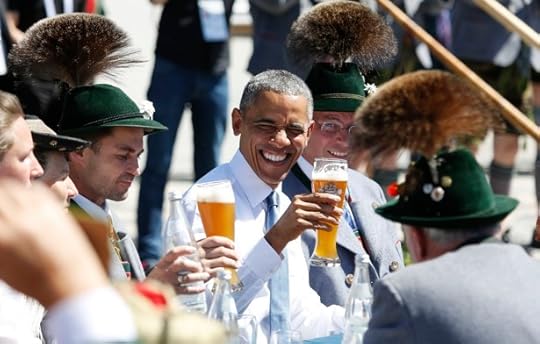
Angela Merkel and Barack Obama kicked the day off with a breakfast beer. Before you judge them too harshly, consider the agenda they’ve got ahead of them at the G7 summit. You might want a crisp weissbeer to start the day too.
Obama arrived in Germany fresh from delivering a moving eulogy for Beau Biden, the vice president’s son, in Wilmington, Delaware on Saturday. Merkel, the German chancellor, is hosting the leaders of Canada, France, Italy, Japan, and the United Kingdom as well as Obama at the foot of the Bavarian Alps for the summit. As Reuters notes, Merkel has planned an agenda that includes discussion of climate change and global health challenges like Ebola, but those are likely to take a backseat to two, more pressing crises on Europe’s outer edges.
Related Story
Are the New Sanctions on Russia Really Working?
One is the plight of Greece, with the nation’s leftist government and its creditors engaged in the latest round of brinksmanship over its debt. Greece is running out of cash, but international creditors are refusing to release bailout money unless the government makes concessions. Prime Minister Alexis Tsipras, elected on a platform of fighting back against European-imposed austerity, has refused to budge. Jean-Claude Juncker, the president of the European Commission, had expected to have a proposal from Tsipras several days ago, but he was “visibly angry,” according to The Guardian, speaking about negotiations on the sidelines of the G7 Sunday.
“Alexis Tsipras promised that by Thursday evening he would present a second proposal. Then he said he would present it on Friday. And then he said he would call on Saturday. But I have never received that proposal, so I hope I will receive it soon. I would like to have that Greek proposal,” he said.
Fears are once again high that Greece might pull out of the euro, though Juncker and other international authorities say they remain committed to keeping Athens in the fold. A Greek exit would pose a challenge to a beleaguered EU—other countries might feel tempted to follow its lead; meanwhile, rising euroskepticism in Britain led Prime Minister David Cameron to promise a referendum on U.K. membership during his successful reelection campaign.
At least on the other crisis there seems to be a bit more consensus. Merkel is trying to maintain a unified front against Russia, maintaining EU sanctions put in place as a response to the ongoing invasion of Ukraine, where fighting has heated up in the last couple of weeks. (The group that’s meeting in Germany was the G8 until Russian President Vladimir Putin was unceremoniously dumped in retaliation for his moves into Crimea.) Sanctions have put a serious pinch on the Russian economy, but they’ve also hurt Russia’s European trading partners. Italy’s prime minister and left-wing politicians in Germany are among those bearish on sanctions. Merkel, Cameron and Obama insist measures stay in place until Russia pulls back, and they’ve proposed aid for EU nations that might otherwise be tempted to reverse sanctions.
Meanwhile, Obama and Merkel are still working to repair their relationship after revelations that the U.S. was spying on her—and she seemed “cooler” at the breakfast, The Guardian reported: “Despite using his first name, and addressing him in the informal ‘du’ form, she immediately made a veiled reference to the tensions between the US and Germany over the scandal surrounding Germany’s intelligence agents allegedly helping the US’s National Security Agency to spy on officials and companies in Europe.”
The beer may have gone to the president’s head—he said an alphorn performance was the best he’d ever heard, and suggested he might shop for lederhosen while in town. Looking at the G7 agenda, though, it’s no wonder he and Merkel wanted a little liquid courage before things start.









‘Dinnertimin’ and ‘No Tipping’: How Advertisers Targeted Black Consumers in the 1970s
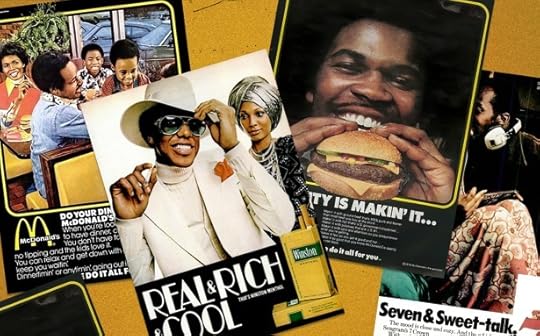
In the 1970s, something special began happening in American advertising. At the tail end of the civil-rights movement, the industry began to move away from its decades-long habit of portraying African Americans almost exclusively in positions of servitude or inferiority, as props in ads aimed at white audiences. By the 1970s, companies such as McDonald’s and Coca-Cola began increasing the racial diversity depicted in their campaigns. In 1974, Jello became one of the first big companies to hire an African American spokesperson—Bill Cosby. The goal was twofold for corporations: to keep up with the times, and to broaden their potential consumer base.
But the way many agencies went about this demonstrates how little they understood about their target demographic—and the results, like so many vintage ads, appear deeply misguided to modern audiences. To McDonald’s, for example, appealing to African American consumers specifically meant, in part, ads such as “Makin’ it” and “Dinnertimin,’” which made extensive use of “g-dropping.”
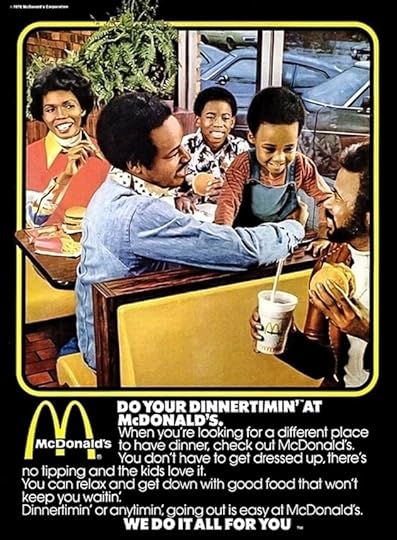 McDonald’s
McDonald’s There was also the “Get Down” campaign.
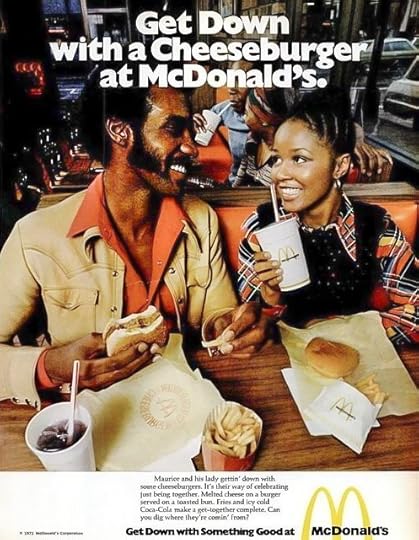 McDonald’s
McDonald’s Ads featuring Caucasians from around the same time, meanwhile, left out lines like “On the real, kids can really dig gettin’ down with McDonald’s” and the insidious “‘em.” Employing “g-dropping” to appeal to African American audiences has a long history, from Aunt Jemima’s much-maligned “mammy” ads (which used lines like “Every bite is happyfyin’ light”) in the early 20th century to President Barack Obama’s controversial speech to the Congressional Black Caucus in 2011.
Burger King played up this vernacular distinction in some of its “Have It Your Way” ads to a lesser extent, though one ad inexplicably interjected the line “Have mercy!!”
 How marketing defined and influenced an era
How marketing defined and influenced an eraRead More
Charlton McIlwain, an associate professor at New York University who specializes in race and media, said in an email that he views these tone-deaf ads as “the outcome of [advertisers] trying to do the right thing, but not necessarily knowing what that meant.” White-dominated ad agencies lacked a general familiarity with blacks and black communities, leading them ”to design ads that were racially naive and necessarily relied on stereotypes for lack of any other information.”
Neil Drossman, an executive creative director and partner at his own ad agency, agreed, calling the McDonald’s ads “a really cynical and superficial effort to reach a black audience.” Drossman, who began working in New York ad agencies in the 70s, said he remembers his firm working on an ad featuring a black couple and being asked if it looked “too urban.” According to Drostman, most of the industry’s missteps resulted from an ignorance on behalf of mainstream ad companies (though there were and are specialized black agencies), but the general failure in tone was something that even the conventions of the era can’t really excuse. “What differentiated the good agencies of that period from the big, bad ones (the great majority) was a respect for the target and a desire to understand it,” Drossman said.
Advertisers knew empirically that African Americans were more likely to buy a product when they saw themselves reflected in ads—so targeted advertising made sense. But agencies also worried that products would become “branded black,” losing them their white consumers as a result. This turned out to be a misguided fear. Demographic targeting continued to flourish, and by the end of the decade, blacks made up around 12 percent of models in commercials, compared to 3 percent in the mid-1960s, McIlwain said.
If microtargeting is a legacy of 1970s advertising industry shifts, then so is the casual—or symbolic—racism that inevitably resulted. As the sociologist Anthony Cortese noted in his book Provocateur: Images of Women and Minorities in Advertising, “Stereotypes of blacks and ethnic minorities have not been eliminated but have changed in character, taking subtler and more symbolic or underhanded forms.” While advertisers took depictions of African American more seriously, other minorities were left out, largely because they had no significant spending power and weren’t worth pursuing.
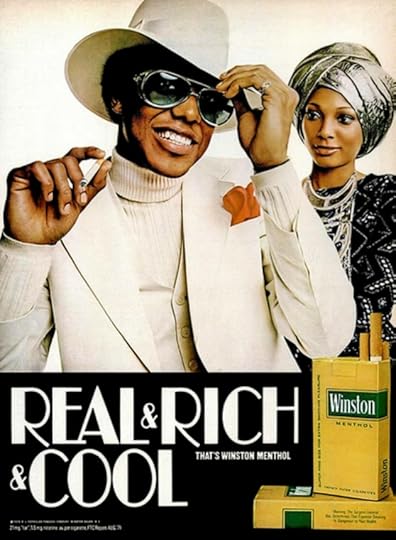 Winston
Winston Not only did advertisers regurgitate stereotypes, but they also helped invent new ones. The 1970s also marks the beginning of advertisers targeting minorities in vice-related categories. Think alcohol and cigarettes, especially menthol, which companies such as Winston branded as “Real & Rich & Cool.” As middle-class white consumers began kicking their smoking habits in the 70s, agencies began advertising for cigarettes in predominantly black communities at 2.6 times the rate of white communities. Today, McDonald’s continues to run a website dedicated to promoting black culture called 365Black. As Imani Perry, a professor at Princeton University’s Center for African American studies told Digiday in 2014:
McDonald’s direct marketing to African Americans has always troubled me, largely because so many African Americans live in urban areas surrounded by fast food restaurants and with limited access to fresh produce and unprocessed food. It seemed to add insult to injury to present this business as having any investment or interest in African American history and culture.
There is a difference, though, in the kind of reaction companies can expect today if an ad goes too far in an attempt to appeal to a certain demographic. “Businesses must weigh the benefit of potential profit to be gained from ethnic consumers against the risk of permanently alienating such large consumer markets,” Cortese said. “In the past, boycotts by ethnic consumers were successfully used for social change. Today's activists are much more hostile and bold. Demands that particular goods be taken off retail shelves have become more intense.”
Which is great news. The overall progress the advertising industry has made in depicting people of different backgrounds and lifestyles hasn’t made people any more complacent about the kinds of casually racist imagery so many promotions still resort to. Ashton Kutcher in brownface playing a character named Raj for PopChips? Backlash, and the ad got pulled. A Mountain Dew commercial featuring a goat suspected of beating up a woman telling a lineup of black men “You betta not snitch on a playa”? It was called “the most racist ad ever” and also got pulled. All of which goes to show that, even with decades of hindsight, agencies are still looking to the sensibilities of the public to keep them in check.









'Dinnertimin'' and 'No Tipping': How Advertisers Targeted Black Consumers in the 1970s

In the 1970s, something special began happening in American advertising. At the tail end of the civil-rights movement, the industry began to move away from its decades-long habit of portraying African Americans almost exclusively in positions of servitude or inferiority; as props in ads aimed at white audiences. By the 1970s, companies such as McDonalds and Coca-Cola began increasing the racial diversity depicted in their campaigns. In 1974, Jello became one of the first big companies to hire an African American spokesperson—Bill Cosby. The goal was twofold for corporations: to keep up with the times, and to broaden their potential consumer base.
But the way many agencies went about this demonstrates how little they understood about their target demographic—and the results, like so many vintage ads, appear deeply misguided to modern audiences. To McDonalds, for example, appealing to African-American consumers specifically meant, in part, ads such as “Makin’ it” and “Dinnertimin,’” which made extensive use of “g-dropping.”
 McDonalds
McDonalds There was also the “Get Down” campaign.
 McDonalds
McDonalds Ads featuring Caucasians from around the same time, meanwhile, left out lines like “On the real, kids can really dig gettin’ down with McDonald’s” and the insidious “‘em.” Employing “g-dropping” to appeal to African American audiences has a long history, from Aunt Jemima’s much-maligned “mammy” ads (which used lines like “Every bite is happyfyin’ light”) in the early 20th century to President Barack Obama’s controversial speech to the Congressional Black Caucus in 2011.
Burger King played up this vernacular distinction in some of its “Have It Your Way” ads to a lesser extent, though one ad inexplicably interjected the line “Have mercy!!”
 How marketing defined and influenced an era
How marketing defined and influenced an eraRead More
Charlton McIlwain, an associate professor at New York University who specializes in race and media, said in an email that he views these tone-deaf ads as “the outcome of [advertisers] trying to do the right thing, but not necessarily knowing what that meant.” White-dominated ad agencies lacked a general familiarity with blacks and back communities, leading them ”to design ads that were racially naive and necessarily relied on stereotypes for lack of any other information.”
Neil Drossman, an executive creative director and partner at his own ad agency, agreed, calling the McDonalds ads “a really cynical and superficial effort to reach a black audience.” Drossman, who began working in New York ad agencies in the 70s, said he remembers his firm working on an ad featuring a black couple and being asked if it looked “too urban.” According to Drostman, most of the industry’s missteps resulted from an ignorance on behalf of mainstream ad companies (though there were and are specialized black agencies), but the general failure in tone was something that even the conventions of the era can’t really excuse. “What differentiated the good agencies of that period from the big, bad ones (the great majority) was a respect for the target and a desire to understand it,” Drossman said.
Advertisers knew empirically that African Americans were more likely to buy a product when they saw themselves reflected in ads—so targeted advertising made sense. But agencies also worried that products would become “branded black,” losing them their white consumers as a result. This turned out to be a misguided fear. Demographic targeting continued to flourish, and by the end of the decade, blacks made up around 12 percent of models in commercials, compared to 3 percent in the mid-1960s, McIlwain asid.
If microtargeting is a legacy of 1970s advertising industry shifts, then so is the casual—or symbolic—racism that inevitably resulted. As the sociologist Anthony Cortese noted in his book Provocateur: Images of Women and Minorities in Advertising, “Stereotypes of blacks and ethnic minorities have not been eliminated but have changed in character, taking subtler and more symbolic or underhanded forms.” While advertisers took depictions of African American more seriously, other minorities were left out, largely because they had no significant spending power and weren’t worth pursuing.
 Winston
Winston Not only did advertisers regurgitate stereotypes, but they also helped invent new ones. The 1970s also marks the beginning of advertisers targeting minorities in vice-related categories. Think alcohol and cigarettes, especially menthol, which companies such as Winston branded as “Real & Rich & Cool.” As middle-class white consumers began kicking their smoking habits in the 70s, agencies began advertising for cigarettes in predominantly black communities at 2.6 times the rate of white communities. Today, McDonalds continues to run a website dedicated to promoting black culture called 365Black. As Imani Perry, a professor at Princeton University’s Center for African American studies told Digiday in 2014:
McDonald’s direct marketing to African Americans has always troubled me, largely because so many African Americans live in urban areas surrounded by fast food restaurants and with limited access to fresh produce and unprocessed food. It seemed to add insult to injury to present this business as having any investment or interest in African American history and culture.
There is a difference, though, in the kind of reaction companies can expect today if an ad goes too far in an attempt to appeal to a certain demographic. “Businesses must weigh the benefit of potential profit to be gained from ethnic consumers against the risk of permanently alienating such large consumer markets,” Cortese said. “In the past, boycotts by ethnic consumers were successfully used for social change. Today's activists are much more hostile and bold. Demands that particular goods be taken off retail shelves have become more intense.”
Which is great news. The overall progress the advertising industry has made in depicting people of different backgrounds and lifestyles hasn’t made people any more complacent about the kinds of casually racist imagery so many promotions still resort to. Ashton Kutcher in brownface playing a character named Raj for PopChips? Backlash, and the ad got pulled. A Mountain Dew commercial featuring a goat suspected of beating up a woman telling a lineup of black men “You betta not snitch on a playa”? It was called “the most racist ad ever” and also got pulled. All of which goes to show that, even with decades of hindsight, agencies are still looking to the sensibilities of the public to keep them in check.









June 6, 2015
American Pharoah Reigns, Wearing a Triple Crown

Who says America rejects royalty?
Fans gleefully acclaimed a pharaoh and granted him a new crown Saturday, after the horse American Pharoah won the Belmont Stakes. That makes him the first Triple Crown winner since 1978 and only the 12th in history. The horse, ridden by jockey Victor Espinoza and trained by Bob Baffert, ran the mile-and-a-half track in 2:26.65.
Related Story
The Ugly Truth About Horse Racing
It’s a historic victory. While 17 horses have won the first two legs of the Triple Crown—the Kentucky Derby and Preakness Stakes—completing the hat trick has eluded them. American Pharoah’s victory defied both science and superstition—some had speculated that no one horse would win as long as Frank Sinatra’s “New York, New York” was the post-parade song at the Belmont, rather than the traditional incumbent, “Sidewalks of New York,” which was unseated in 1997. Just last year, California Chrome won the first two races of the Triple Crown, only to falter in the Belmont.
American Pharoah was, however, the favorite in the race. Now, he’s likely to continue winning huge money as a favorite—but now as a favorite of breeders seeking to take advantage of his genetics, rather than bettors expecting him to run fastest. CNN Money reports that the horse could earn $6.5 to 7 million every year for the remaining decades of his life.









Why Did China Hack Federal Employees' Data?
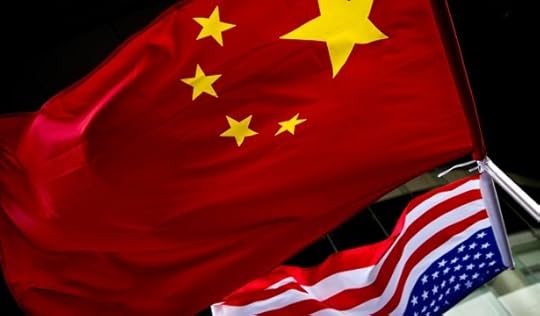
One of things that makes hacking so unsettling is the asymmetry of the situation: Unlike with a physical theft, the victims sometimes don’t know they’re victims for a long time, and once they find out, it’s hard to tell just how badly they’ve been victimized.
That’s true of the massive data breach revealed Thursday affecting 4 million current and former federal employees. There’s still a great deal that hasn’t been explained about why and how the hack happened, and whose data was compromised. (Angry federal employees took to the Facebook page of the Office of Personnel Management to complain about feeling left in the dark about the attacks.) There are, however, some emerging answers to three key questions: Who did it, why, and how it happened.
Early on, the government fingered Chinese hackers in the leak. Bruce Schneier has written for The Atlantic about the dangers of uncritically accepting initial attributions for attacks. The Chinese government has also rejected the claim, saying that it’s a victim of hacking itself. (That’s probably true—and the U.S. admits that it also hacks foreign governments.) But officials says there are fingerprints of known Chinese hackers. Another they’re pointing at China—rather than, say, Russian organized-crime hackers who have also assaulted American computer systems—is the kind of data taken and what’s been done with it.
“They didn’t go to sell the data, which is what criminal groups usually do,” James Lewis of the Center for Strategic and International Studies told The New York Times. The government and outside experts think that, along with the fact that the leak targeted government employees suggest an elaborate effort to build a huge database of information on federal employees. The data reportedly cover employees going back as far as 1985, and includes information on employees who applied for security clearances.
Related Story
Chinese Hackers Snare Data From Millions of Federal Workers
How did they do it, though? The government has a large, costly, sophisticated, and mostly secret system for protecting its data. But that system is, even according to the government, obsolete. It follows an old protocol of attempting to keep hackers outside, like a fence. Newer systems assume hackers will get through the outside defense and try to stop them once they’re inside.
The U.S. had been warned that it wasn’t ready in an inspector general’s report late last year. By the time the report landed, it was apparently too late, but many of the steps it recommended still haven’t been taken. For example:
In the most egregious case cited by the inspector general, outsiders entering the system were not subjected to “multifactor authentication” — the systems that, for example, require a code that is sent to a cellphone to be entered before giving access to a user. Asked about that in an interview, Donna Seymour, the chief information officer at the Office of Personnel Management, said that installing such gear in the government’s “antiquated environment” was difficult and very time consuming, and that her agency had to perform “triage” to determine how to close the worst vulnerabilities.
The government will now institute two-step verification—a step that longtime Atlantic readers will remember James Fallows exhorting them to take as early as the spring of 2011.
Generally, U.S. systems for data don’t seem to have wrapped themselves in glory concerning the hack. In 2014, then-Attorney General Eric Holder called for rules forcing companies to make disclosures to customers quickly when their information was hacked; it seems the government wouldn’t have met those guidelines. Critics have also wryly noted that a huge incursion into sensitive employee information tends to undermine the government’s claims that its intelligence apparatus can protect huge amounts of personal information swept up in surveillance dragnets. As one former senior official told the Times, “The mystery here is not how they got cleaned out by the Chinese. The mystery is what took the Chinese so long.”









'The World Noticed': Beau Biden's Death Unites a Nation in Mourning
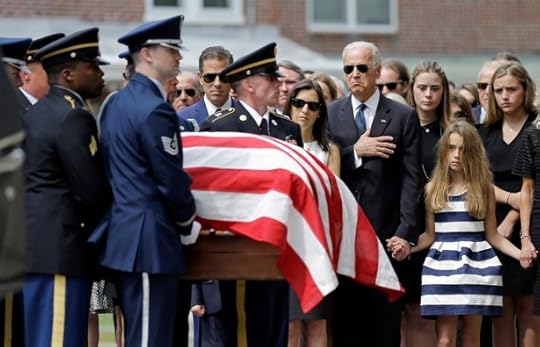
Beau Biden was laid to rest Saturday in Wilmington, Delaware. His untimely death, from brain cancer at just 46, is a tragedy for Vice President Joe Biden—more grief to add to the loss of his wife and daughter decades ago, in a car crash that young Beau survived.
The sadness of the Biden family has to a remarkable and moving extent become a national sadness, too. The death of the former Delaware attorney general has produced an outpouring of grief that is both bipartisan and perhaps surprisingly large for a man who never held national office and always seemed to shy away from the spotlight even as he pursued a life of public service.
President Obama delivered one of several eulogies at Biden’s funeral at St. Anthony of Padua Church, speaking for more than 20 minutes and getting choked up several times while bringing tears to the faces of those listening. He focused on how the young boy was marked by the accident that killed his mother and sister when he was four.
“From his dad he learned to get back up when he was down,” the president said. "Rather than use his childhood trauma for justification for a life of self-pity or self-centeredness, that very young boy made a very grown-up decision: He would live a life of meaning, he would live a life for others." That decision resulted in an honorable, admirable, and accomplished man, Obama said: “He did in 46 years what most of us couldn't do in 146 years.”
A long list of dignitaries attended— Chris Martin of Coldplay, one of Biden’s favorite bands, performed—and TV cameras captured the ceremony. That followed a wake on Friday that was attended by thousands of mourners, who began lining up outside the church hours ahead of time. Some waited five hours to pay their respects. On Thursday, more than a thousand people attended a memorial in the Delaware State House. And since Biden’s death last Saturday, heartbroken tributes have streamed in from politicians of both parties, journalists, and pundits of all political persuasion.
Speaking of Beau Biden’s life of service (his full comments are here), Obama said: “The world noticed”—a statement proved by the ceremony. It’s rare in this age to see such a uniform reaction to the loss of any political figure.
Related Story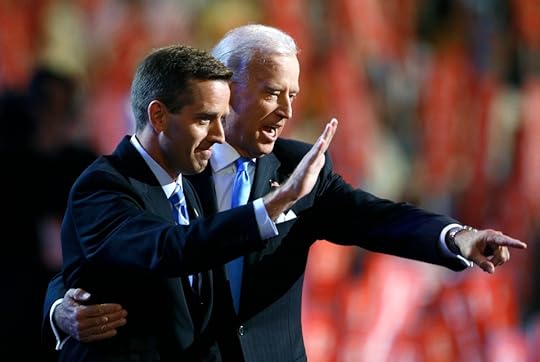
The last comparable outpouring might have been the death of former President Gerald Ford in 2006, nearly a decade ago. Unlike Ford, Beau Biden wasn’t a president—though he had a strong connection to the White House through his father. But as my colleague Matt Ford noted when he died, Biden did live a life of service. As a major in the Delaware National Guard, he served for a year in Iraq from 2008 to 2009, winning a bronze star. As state attorney general, he prosecuted a terrible pedophilia case. He also demonstrated an eagerness to earn his position, despite being the son of a universally beloved and powerful politician in his small state. He declined an appointment to the attorney general’s office in favor of seeking it by election, and opted to serve out his term rather than accept appointment to fill out his father’s term when Joe Biden became vice president.
Perhaps one reason Beau Biden’s death has moved the nation so much is that he recalls John F. Kennedy and Robert F. Kennedy. Like them, he was a handsome, charismatic official from a political family. Like them, he endured family tragedy. Like them, he volunteered to serve in the military. And like them, he projected a desire to be in politics out of a sense of duty—a duty to serve the country, borne out of a love of fellow man. Like the Kennedy brothers, Beau Biden was struck down far too young by an unexpected death, leaving behind a young family and a sense of great potential blocked by fate.
"He made you want to be a better person," Obama said Saturday. "Isn't that finally the measure of a man? The way he lives, the way he treats others, no matter what life may throw at him."
Even for the majority of Americans who never knew Biden, that seemed to ring true. The chance to mourn someone who seemed to represent so much of the best of what the United States can offer, became a painful but cathartic national ritual that culminated in Wilmington Saturday.









Insidious: Chapter 3 Is All Jumps, No Real Scares
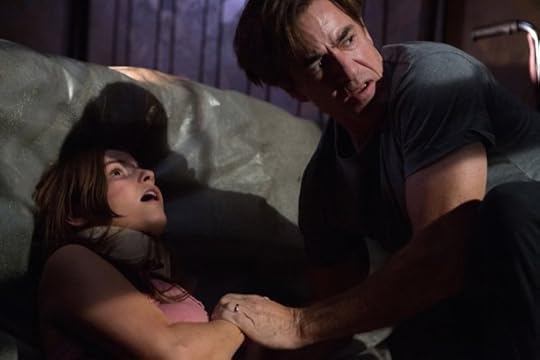
The first promotional poster for Insidious: Chapter 3 consisted solely of red text against a gray background:
“The man who can't breathe, the man who lives in the vents, I heard him saying your name last night. I heard him in your room, while you were gone. He's in there right now. Standing in your room.”
The disembodied warning—rhythmic, unassuming, banal—somehow manages to instantly conjure up dread with no audiovisual effects, just a kind of poetic simplicity. Unfortunately, the rest of the film has no interest in the effectiveness of such subtlety.
Related StoryAtlantic Monthly Contributors's Blog
- Atlantic Monthly Contributors's profile
- 1 follower











